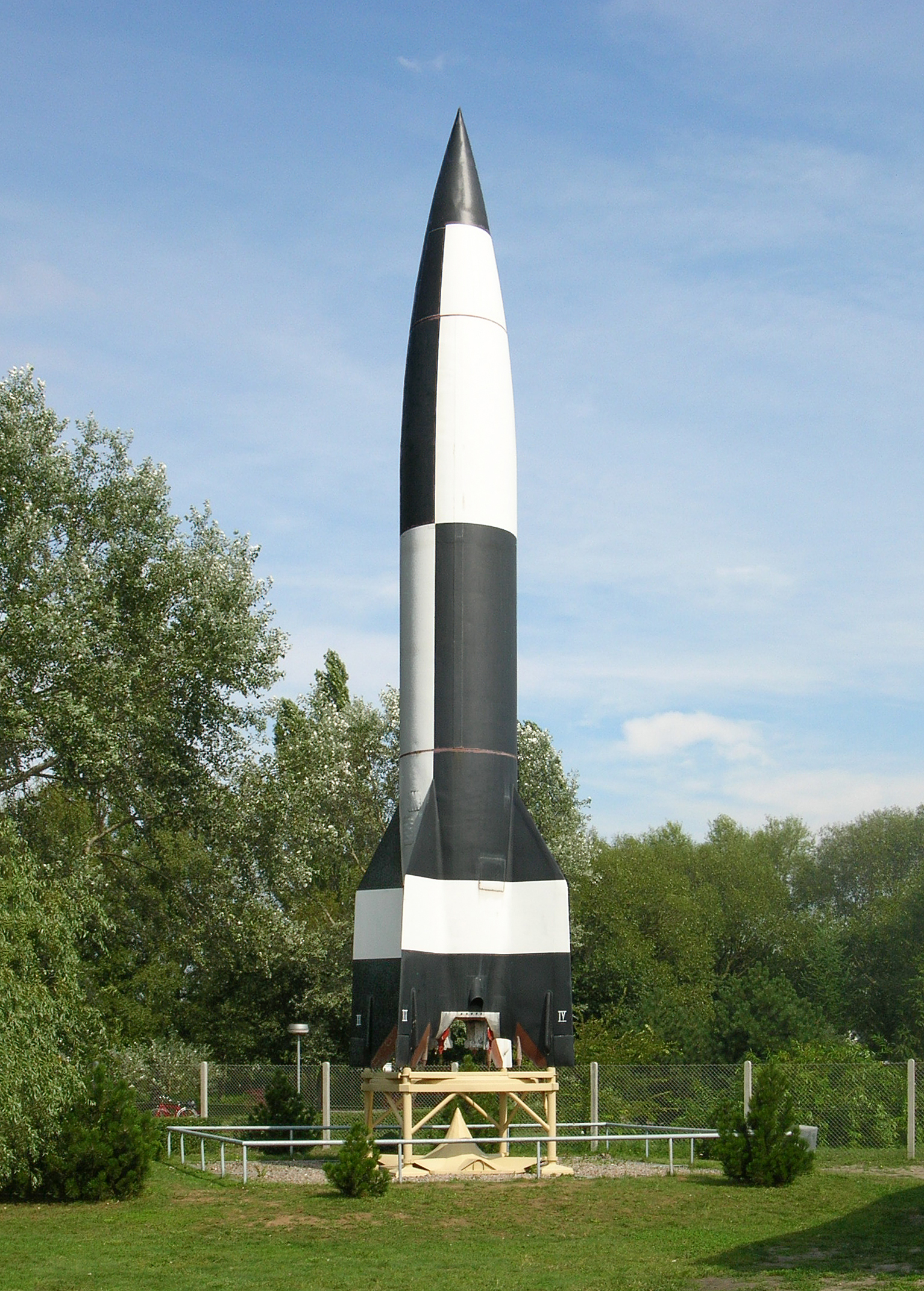V2
| Name | V-2 |
|---|---|
| Image |  |
| Country of origin | Germany |
| Type | Short range ballastic missile |
| Range | 320 km |
| Flight ceiling | 88 km 206 km (If launch vertically) |
| Length | 14 m |
| Diameter | 1.65 m |
| Mass | 12500 kg |
| Warhead | 1000 kg |
| Max Speed | 5,760 km/h |
| Propulsion | 3,810 kg 75% Ethanol 25% water 4,910 kg liquid oxygen |
| Engine | Liquid-propellant rocket engine |
| Guidance | Gyroscopes to determine direction Müller-type pendulous gyroscopic accelerometer for engine cutoff on most production rockets |
| Launch platform | Test launcher |
| Service period | 1942-1945 |
| Description | The V-2 rocket, developed by Nazi Germany during World War II, was the world’s first long-range ballistic missile, pioneering the use of liquid-propellant rocket engines. While primarily intended as a weapon of terror against Allied cities, the V-2 proved to be a technological marvel, significantly influencing post-war rocket development. Its chief designer, Wernher von Braun, and his team played a crucial role in both the American and Soviet space programs, demonstrating the dual nature of scientific progress. Though its primary purpose was destructive, the V-2 undeniably spurred advancements in rocketry, ultimately paving the way for space exploration while simultaneously highlighting the ethical dilemmas associated with advanced weapons technology. |
| Website | NA |
Disclaimer: This information is based on publicly available sources and should be considered for general knowledge purposes only.